
Virtua Fighter is a fighting game created for the Sega Model 1 arcade platform by AM2, a development group within Sega, headed by Yu Suzuki. An early prototype version was location tested in Japan by August 1993, before the complete game was released worldwide in December 1993. It is the first game in the Virtua Fighter series, and the first arcade fighting game to feature fully 3D polygon graphics. The game has been ported to several platforms including the Sega Saturn, Sega 32X, and Microsoft Windows.

NBA Jam is a basketball video game developed and published by Midway for arcades in 1993. It is the first entry in the NBA Jam series. The project leader for this game was Mark Turmell.
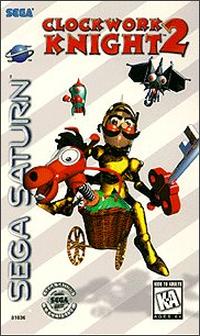
Clockwork Knight 2, known in Japan as Clockwork Knight: Pepperouchau's Adventure - Last Volume, is a side-scrolling platform video game developed and published by Sega for the Sega Saturn. It is the sequel to Clockwork Knight, a title also released for the Sega Saturn, and features virtually identical gameplay mechanics. Despite this, many critics deemed it a dramatic improvement over its predecessor, citing improved replay value and pacing. A second sequel, the working titles for which included Clockwork Knight 3: Pengin War and Clockwork Knight Puzzle, used gameplay similar to the Bomberman series, but never made it past the beta stage. Another sequel, titled Knight N' Knight, was scheduled to appear on the GameCube, but never released.
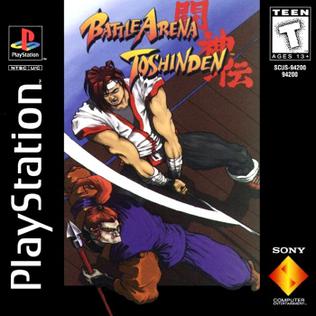
Battle Arena Toshinden, also transliterated Toh Shin Den, is a fighting video game developed by Tamsoft and published by Takara for the PlayStation. Originally released in 1995, it was released internationally by Sony Computer Entertainment, followed by 1996 ports for the Sega Saturn, Game Boy and MS-DOS. It was one of the first fighting games, after Virtua Fighter in 1993 on arcade and console, to boast polygonal characters in a 3D environment, and features a sidestep maneuver which is credited for taking the genre into "true 3D."

Castlevania: Dracula X is a 1995 platform video game developed and published by Konami for the Super Nintendo Entertainment System. It is the second Castlevania installment to be released for the Super NES. It is a remake of Castlevania: Rondo of Blood, which was previously released in Japan on the PC Engine Super CD-ROM2 in 1993. While the plot is similar to Rondo of Blood and it uses many of that game's graphics, it features new levels and altered gameplay elements, rather than being a direct port because of the limits of the Super NES cartridge format and exclusivity agreements with PC Engine maker NEC. It was released on July 21, 1995 in Japan, in September 1995 in North America, February 22, 1996 in Europe, and on June 22, 1996, in Australia. The game received mixed reviews, with critics considering it inferior to Rondo of Blood.
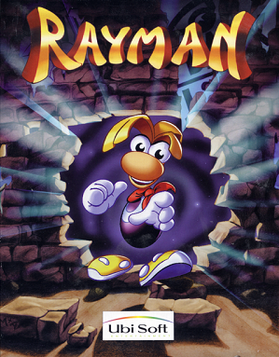
Rayman is a side-scrolling platform video game developed and published by Ubi Soft as the first installment of the Rayman series. It was originally released in September 1995 for MS-DOS, Windows, Atari Jaguar, Sega Saturn, and Sony PlayStation. The player controls Rayman, a hero who must restore balance to his colourful world from the evil Mr. Dark.

Astal is a 2D side scrolling platform game for the Sega Saturn. Astal was released early in the Sega Saturn's life and used hand-drawn graphics. The animations for the cutscenes were provided by TMS Entertainment.

Castle of Illusion Starring Mickey Mouse is a 1990 platform game developed by Sega and released for the Mega Drive/Genesis. An 8-bit version of the game was later released for the Master System and Game Gear. The game follows Mickey Mouse on a quest to save Minnie Mouse from the evil witch Mizrabel. It is the first game in Sega's Illusion video game series starring Mickey.

Shinobi Legions, known as Shinobi X in Europe and as Shin Shinobi Den in Japan, is an action game in the Shinobi series developed and published by Sega in 1995 for the Sega Saturn.

Bug! is a platform game developed by Realtime Associates and published by Sega for the Sega Saturn. It was first released in North America, in 1995, weeks after the Saturn's launch there; in Europe on September 15, 1995; and, in Japan, on December 8 the same year. It was also ported to Windows 3.1x and Windows 95 in 1996 by Beam Software. The game is one of the earliest examples of 3D platforming, as well as one of the first platform games released on the Saturn. Character movement is restricted to a track, unlike many in the genre that allow for unrestricted movement in all directions.
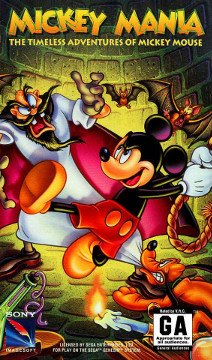
Mickey Mania: The Timeless Adventures of Mickey Mouse is a 1994 platform video game developed by Traveller's Tales and published by Sony Imagesoft for the Super NES, Sega Genesis, and Sega CD. In the game, the player controls Mickey Mouse, who must navigate through various side-scrolling levels, each designed and based on classical Mickey Mouse cartoons. The game was later released on the PlayStation in 1996 as Mickey's Wild Adventure in PAL regions by Sony Computer Entertainment, Sony Imagesoft's successor. A second game, Mickey Mania 2, was intended to be released but was canceled due to Traveller's Tales focusing on other games.

Tempo is a video game for the Sega 32X released in 1995. It was developed by Sega and Red Company and published by Sega.

Starblade is a 1991 3D rail shooter arcade game developed and published by Namco. Controlling the starfighter FX-01 "GeoSword" from a first-person perspective, the player is tasked with eliminating the Unknown Intelligent Mechanized Species (UIMS) before they wipe out Earth. Gameplay involves controlling a crosshair with a flight yoke stick and destroying enemies and their projectiles before they inflict damage on the player.

Mystaria: The Realms of Lore, released as Riglord Saga in Japan, is a tactical role-playing game for the Sega Saturn. In late 1996 it was re-released as Blazing Heroes in North America. Its graphics consist of pre-rendered sprites and polygonal backgrounds. Its sequel, Riglord Saga 2, was released in Japan only in 1996.

Tekken (鉄拳) is a fighting video game developed and published by Namco. It was originally released for arcades in 1994, and ported to the PlayStation a year later. The game was well-received by critics. It is the first entry in the Tekken series, with a sequel, Tekken 2, being released in 1995.

Sparkster is a side-scrolling platform game developed and published by Konami for the Super Nintendo Entertainment System. The game, the only one in the series to be released on a Nintendo console, was directed by Hideo Ueda and released in 1994 for Japan in September, for North America in October, and for Europe in 1994.

Cyberwar is a DOS game based on the film The Lawnmower Man and a direct sequel to the video game adaptation of the film, which itself takes place after the film. It was released in 1994 by SCi. Ports were announced for the Sega CD, 3DO Interactive Multiplayer, and in Japan only for the Sega Saturn and Sony PlayStation, but only the PlayStation version was released.

Virtual Hydlide is an action role-playing game for the Sega Saturn console, developed by T&E Soft, published by Sega in Europe and Japan, and Atlus Software in North America. It is a remake of the original Hydlide, the first game in the series, but incorporated full 3D graphics and a player character digitized from a live actor. On release, it received mixed reviews, with praise for its graphics, 3D environments and music, while receiving criticism for its gameplay.

Romance of the Three Kingdoms IV: Wall of Fire is the fourth in the Romance of the Three Kingdoms series of turn-based strategy games produced by Koei and based on the historical novel Romance of the Three Kingdoms. Romance of the Three Kingdoms IV: Wall of Fire was the last game in the series to be released on the PC in the United States until Romance of the Three Kingdoms XI. This was also the last Romance of the Three Kingdoms game to be released on the SNES.
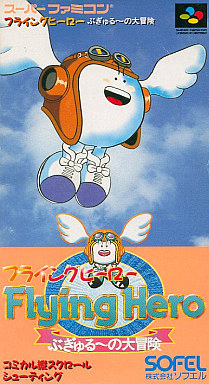
Flying Hero: Bugyuru no Daibouken is a vertically scrolling shooter developed by Sting Entertainment and published by SOFEL. It was released in Japan on December 18, 1992 for the Super Famicom. The game was not released in other countries.




















